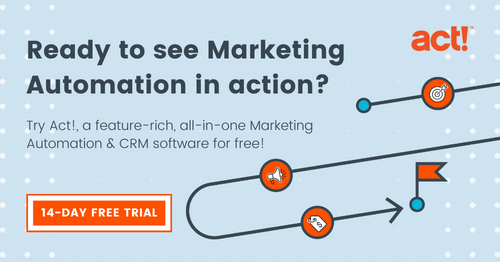
Are you part of the remote marketing workforce yet? Or consider it an option for the future?
You’re not alone: a report by Global Workplace Analytics showed that after the onset of the pandemic, 70% of companies are planning to adopt a hybrid work model.
But what about your campaigns? Don’t they rely on face-to-face interaction with the team to synchronize complex tasks? Or need to be overseen in real-time to make sure you never lose a prospect?
Well, as we’ll see in this post, there is actually a lot you can automate and streamline with the right CRM tool, even if your entire team is working remotely.
Why Web Apps Are Perfect For Marketing
Let’s start with some general benefits of web apps or software that can be used over the Internet (also known as cloud-based). Besides the obvious fact that it can be accessed at home, the office, or on the go 24/7, there’s more to love here:
- The software is always up to date: no need to wait for the IT team to “rip and replace” your on-site tools, which causes delays, and frustrations, and often means re-training the whole team
- The rollouts are faster and simpler: online CRM tools tend to be updated regularly, which keeps them more secure and efficient than standard on-premise tools
- It’s more cost-effective: if you’re a marketing manager with purchasing power, you’ll quickly notice how online CRM tools are much more affordable than standard on-site tools, as the pricing can be scaled up or down depending on usage
Last but not least, it’s a lot easier to link cloud software together. For instance, you can get seamless integration between Act! and your Microsoft Outlook inbox, to capture marketing data directly from email exchanges with customers, clients, and leads.

Better Business Continuity for Remote Marketers
Marketers often need to live and breathe marketing. And online CRM tools allow them to do just that, by working without downtime and being accessible anywhere.
But more importantly, teams who aren’t in the same place at the same time can also benefit from real-time data synchronization to manage their campaigns.
With Act!, for instance, you can automatically update your customer info in the CRM based on the latest interactions with the business. That means anyone can pick up where the other team member left off, without worrying about duplicate data, manual data entry errors, and wasting time with back-and-forth emails.
Faster Targeted Campaigns
Sales teams know that marketers with the right customer info bring in better prospects than those with stale data. So how do you start your targeted marketing faster? Here again, the right CRM tool can do wonders, by using the power of real-time data updates, for instance, with a web form.
Here’s how it would look in practice.
- You create a form on your website for capturing leads
- Act! gathers the data, and automatically sends it to the marketing team’s dashboard
- The remote team immediately receives the info and sends a targeted message that is relevant to the user, like a promo code
This ability to increase response time between CRM data entry and marketing is the best way to reduce lead-spoil and improve conversion.
Seamless Integration Between Sales and Marketing
If you’re delegating tasks to various team members, you might find that some info can get lost between the sales and marketing teams. But with a fully integrated CRM, you can work safely with the knowledge that everyone uses the same tool, and accesses the same data.
In fact, team members from various departments can create their own workflows, alerts, and issue follow-ups, without wasting time sending messages between numerous platforms. When you realize that the average business uses up to 30 cloud apps, it makes sense to combine as many of their features together as possible.
All this leads to better communication, increased productivity, and better lead nurturing before the sales team can do their job.
Better Visibility Into the Customer Lifecycle
Sales teams need to constantly adjust their processes, which can be confusing for marketers if they are left in the dark. But working with a cloud-based CRM tool that supports both marketing and sales helps remove opacity as well as data silos.
In other words: it means better collaboration, which could lead to some great insights from both departments to improve your business processes and maximize growth.
One Centralized Hub, Reduced Systems Overlap
The physical office space does, of course, have its advantages. But if remote work is the way your company is going, it’s just as important to have one central system to keep all the customer and project data.
Employees must feel confident in their virtual workspace, and a great CRM tool can be the perfect place to congregate for all departments, especially if you can use it to engage with customers, launch marketing campaigns, and measure how successful your efforts were with a feature like Act!’s Call Lists & Hot Leads.
Key Takeaways
Modern sales and marketing funnels require seamless collaboration between team members. You want data to stay fresh and accurate so it can deliver better results. This is especially true if they aren’t working in the same location.
Luckily, the right CRM tool could offer a perfect integration with your marketing processes, by sharing workflows, and dashboards and synchronizing customer data in real time.
While marketers often want to leave the CRM data to the sales team alone, there are numerous advantages to seeing it updated in real-time: especially if your software fosters better communication and streamlined collaboration between every remote team member.
See how Act! Marketing Automation can help your marketing team create better campaigns.






